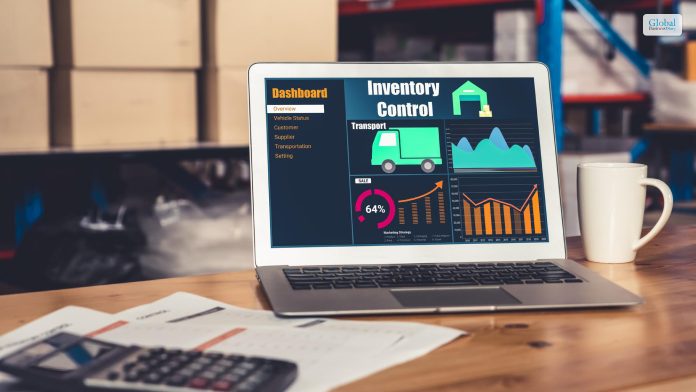What Made Gautam Adani Excel Mukesh Ambani As Asia’s Richest Giant

Gautam Adani has made history in business by surpassing the Reliance group CEO net wealth of Mukesh Ambani. With the rise of the Adani group shares in the market on Wednesday, there has been a considerable fall in the share prices of Reliance Industries.
Billionaire Mukesh Ambani was left behind in the race after Adani Surpassed him and became the wealthiest person of India and Asia who added $55 billion to his net wealth. On the other hand, Mukesh Ambani has added $14.3 billion in his net wealth.
Reasons For Growth Of Gautam Adani And Fall Of Ambani?

1. Fall In Share Prices Of Ambani
There has been a considerable fall in the share prices of Mukesh Ambani’s Reliance group over the past few days. Actually, this fact of Mukesh Ambani has made Gautam Adani the richest person in Asia and India right now.
With the growth of the Shares of the Gautam Adani group, there has been a considerable fall in the prices of Reliance Industries. The current Gautam Adani net worth In rupees is 5,05,900 crore, making him reach the wealthiest spot in IIFL wealth Hurun India listings in 2021.
In 2021, the Reliance Group CEO added only 14.3 billion; on the contrary, Gautam Adani added $55 billion to his wealth. This has created the difference between the two.
2. Deal Failure With Saudi Aramco
With the fall of the deal with Suadi Amraco, which is worth $15 billion, Reliance has to suffer a 20% stake in its share prices. On the other hand, Gautam Adani has gained an advantage in its share prices due to this fact.
Reliance’s fall of oil to chemical business that is giving more profits made the life of Gautam Adani easier in gaining the momentum in the share prices on Wednesday. Reliance Shares continued to downsize on Wednesday due to this factor.
3. Continuous Fall Of Reliance Share Prices
Reliance shares fell another hit by 1.48% on Wednesday on the significant BSE stock exchange. Gautam Adani’s net worth In 2020 was 4.91 billion. It is one of the most challenging phases of Adani from which he has overcome with flying colors, and its impact falls on the share prices of Reliance.
The close of the BSE on Wednesday at RS 2350.9 has resulted in Reliance losing the confidence of Rs 22000 crore of investors in the market. In addition, it has made Mukesh Ambani poorer by 11000 crores.
Another listed company of the Reliance Industries known as Reliance infrastructure, owned by Mukesh Ambani, has failed to 1.57 percent. The annual fall in the prices due to it is Rs 613.85, and the total loss he suffered due to this is Rs 923.61crore.
4. Changes In Market Capitalization Rate
Adani group has increased its market capitalization rate to Rs 12000 crores and Rs 4250 is the current net capitalization of Gautam Adani. This figure is far ahead of Mukesh Ambani’s Reliance group. It has also made Adani the richest person in India and Asia.
The share prices of the Adani have gained 2.76 percent to make it close at Rs 1754.65. It makes the validation of the company Rs 192,798 crores. It is one of the best market trends of the Adani group that can boost the share prices of Adani to a big margin.
5. Changes In Net Worth Of Adani Group
The changes in the share prices of the Adani group are the result of some recent profitable ventures of Gautam Adani. The gaining of the SEZ shares of the Adani group by 4.59% has contributed to the significant growth of this company.
The significant loss suffered by the Reliance group has made the life of Mukesh Ambani difficult in this decade. The hike in the prices of Adani Port, Adani Power, and SEZ shares have made Gautam Adani the richest person in Asia and India on Wednesday.
6. Gain Of The SEZ Shares By Adani Group
Adani Shares of the SEZ has gained 4.59 percent, and it closes at Rs 762.75, whose net worth is 155,734.62. The share prices of the Adani group have increased at a rapid pace. These factors have made Adani the wealthiest person in the country now.
If you look at the share prices of the Adani group, you can witness a considerable hike in its market prices over the past few years. Therefore, you need to consider these factors while you want to track the business opportunities of the Adani Group in the upcoming decades.
What Is Mukesh Ambani Net Worth Now?
The Networth of Mukesh Ambani is $102.1 billion, and it is expected to fall in the years to come. So if you are interested in investing in Reliance shares, please look at the market trend before making your investments.
Which Factors Must You Consider Before Investing In Capital Stock?
You need to take care of several factors while you want to gain from the investments of the stocks prices. Some of them are as follows:-
- The current financial health of the company where you want to make your investment.
- The market capitalization rate of that particular organization.
- Total Asset Power of the company where you want to make your investments.
Final Take Away
Hence, these are the factors that have made Gautam Adani the wealthiest person in Asia and India. So do not make your choices in grey while making your investments in the capital stock of Gautam Adani or Mukesh Ambani companies.
A wise choice in the investment pattern can help you to gain more from the market. Do not make things more complicated for yourself. Enjoy this news and make your investments in the right company. Try to make your choices in the correct direction.
Read Also:













